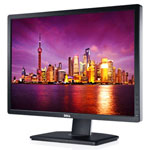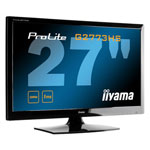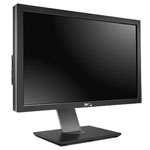
Gaming Monitors Guide
Introduction
The second most important factor for gaming, other than our powerful rig, is how things come to us visually, the way we interpret things and how fast we do it: the monitor. There is loads of brands out there, offering loads of different products and each one claiming they have the best monitor for gaming, etc. Some are true, some are not. In this article I’ll mainly focus on the 2 most important things you should look at before buying a gaming monitor in my opinion. Monitor frequency (hz) and the monitor panel.
60hz vs 120hz vs FPS
Over the past few years, since the appearance of 120hz monitors on the market, there has been a lot of discussion about its pros and cons vs the traditional 60hz monitors. First of all, lets clear out what a hertz is, so we can actually understand better their function. A hertz (hz), measures cycles per second, in other words it tells us how many times a monitor refreshes its image per second. Assuming this, a 120hz monitor refreshes twice as fast as a 60hz monitor, displaying twice the amount of images. This not only results in a much smoother image, but it also makes your eyes relax more, since they have to “process” less information per say. But there’s a slight problem to this theory and it’s caused by the FPS factor. FPS stands for frames per second, and that’s the amount of frames your graphic card is processing per second, and then sent to be displayed by the monitor.
Let’s say for example that you’re playing at 30 fps, and your monitor is a 60hz one, that means there’s 30 images to be processed at a rate of 60 images per second, in that way, there’s 2 equal frames every 1/30 of a sec. That results in a not so pleasant viewing experience, and surely will influence your gaming. With that, there’s always a relation between your computer power and the frequency your monitor works at that you always have to keep in mind when choosing between these two monitor categories. If you have a 60hz monitor, and playing at least at 60 fps, you won’t see any differences above that value, because the monitor simply can’t process more than that. If you have a 120hz one and you play at least at 60 fps, you’ll notice differences until you reach 120fps. Beyond that it won’t make any changes, but the difference between 60 and 120fps in a 120hz is dramatically high, specially in fast paced games.
From a personal experience, even in the desktop just by moving the mouse you can see a clear difference, let alone in game. Of course this difference will be more noticeable the faster the movement is, so if you’re an FPS player or a racing game player it will be even bigger. In the end those extra images you get and the smoother experience will surely get you ahead while gaming vs 60hz monitor players.
TN vs IPS
When choosing a gaming monitor, you’ll be most probably faced with two options regarding the type of panel: TN or IPS. TN is the most common one and found on about 90% of the monitors out there, it’s also the oldest technology. TN panels are also the cheapest to make but also have the shortest response times (ms). In combination with today’s almost common LED back-lighting, these panels offer really good brightness and consume low energy (especially the LED ones). The cons to TN panels are the horrid color shifting that exists in different viewing angles, even if you play right in front of the monitor, you’ll notice color shifting and inconsistencies around the image, and this fact is even more noticeable the cheaper the monitor is. Regarding color accuracy, they are “ok”, some brands are better, others are worse, some gamers don’t really care about it and want the lowest response time, others actually do, and finding a balance between image quality and response time is something you should really put some thought into.
On the other hand, there’s IPS panels. They are a more recent technology, more expensive, more power consuming, and a lot better regarding colour reproduction in comparison to TN panels. They also offer incredible viewing angles, even at 90 degrees at the side or top, which turns into great color consistency over all the screen. One big drawback gaming related to this is the response times, which are worse than TN panels. With that in mind, there’s a recent technology called S-IPS (Super IPS) that offers the fast response time of TN panels with the excellent image of IPS panels, and that’s the perfect balance for an ideal gaming monitor in my opinion. Then again, there’s another drawback. It still doesn’t exist 120hz IPS or S-IPS monitors, due to lack of technology improvement in that field, so we’re limited to 60hz as for now. But in the near future when the technology is available, I would highly recommend it to any gamer out there, you won’t regret it, even if you have to spend almost twice as much as you would for a standard TN 120hz monitor.
Top 3:



Pedro "Moriah" Benjamim